Written by RP Fighting Blindness
A global community united
An international community of families affected by one type of inherited sight loss came together in London on 15th September to share experiences, hear from experts and consider how to work together to drive research forward. We are hugely grateful to VICTA for your support of this event, which was attended by children living with inherited sight loss.
Families affected by mutations in the RDH12 gene, which can cause the early onset retinal disorder Leber congenital amaurosis (LCA), came from the UK, China, India, the USA and various European countries in between.
The day was the brainchild of Sylvia Cerolini, mother of 4 year old Vicky who is living with this form of LCA. Sylvia founded the organisation Through Vicky’s Eyes, which aims to raise funds for research into RDH12-associated sight loss, and has joined forces with similar organisations in Belgium and America to create a network of affected families. Sylvia worked with ophthalmologist and RDH12 researcher Dr Mariya Moosajee and her team at Moorfields Eye Hospital to put the event together, with Dr Moosajee lining up a fantastic programme of talks from other experts.
Exploring genetics and potential treatments
The morning was devoted to explanations of disease mechanisms, latest avenues of research and some genetics facts: “If you typed at 60 words per minute for eight hours a day, it would take you 50 years to type out the entire human genetic code” explained Mr Rob Henderson, an ophthalmic surgeon from Moorfields and Great Ormond Street Hospital.
Prof Bart Leroy from Ghent University in Belgium explained that there is a clear window of opportunity to treat RDH12-associated sight loss with gene therapy because patches of the retina are preserved for quite a long time and could potentially be saved. Dr Moosajee later went on to describe how she is exploring not only gene therapy, but also the repurposing of existing drugs that are already approved for unrelated conditions.
Her development of a zebrafish disease model will allow for high throughput screening of such drugs, an approach that can potentially be used for a range of inherited retinal diseases. Indeed, some future treatments could target disease pathways that are common to all conditions, not just those associated with a specific gene.
The morning ended with a great question and answer session, including some discussion of unproven treatments such as stem cells. “When you read something on the internet, it’s important to interrogate the science and ask “Is there evidence?” You must be incredibly cynical” said Mr Henderson.
“You never know what might be possible”
Lunchtime was an opportunity for families to chat and reflect on the morning. “It’s good that there’s so much research going on behind the scenes while we go about our day to day lives” said Subhaan Sheikh, a university student living with LCA. “When you look at how everything’s changed in technology and medicine in the last 20 years, you just never know what might be possible.”
“I feel immensely privileged to be in the presence of people who are working on research into the core of this condition” added John Smith, whose partner Monica has LCA. “The quality and detail of the information was fantastic and it was so engaging.”
There was also a positive impact on researchers themselves. “As a PhD student working on RDH12, it’s great to meet the patients and their families and listen to their stories” said Hajrah Sarkar, who works with Dr Moosajee. “It has really put into perspective the importance of the work we are doing in the lab.”

Working together
After afternoon talks from professionals who support families in a range of ways, there was further group discussion. The overall feeling was one of a community united by a desire to find answers, and there was clear recognition by the researchers of the value of patients’ and families’ contribution.
“You need to shape the design of our research” Dr Moosajee told the group. She and colleague Dr Adam Dubis also emphasised the need for detailed studies that track patients from relatively early on to build a model of disease progression that can help clarify the impact of new treatments tested in future clinical trials. “It takes a community” said Dr Dubis. “It will take a lot of patients to generate enough data to build a clearer picture.”
Although this was a day that focussed on one particular gene, it was a wonderful example of how families affected by any form of inherited sight loss can support each other and work together with researchers to drive change. As Sylviane de Vel, the mother of a 12-year old with RDH12 LCA and founder of the Candle in the Dark Child Vision Research Fund, said “This day might be the opportunity to kickstart a new initiative.”
The children had a great day!
Whilst the adults made the most of the opportunity to network and gather information, the sixteen children and teenagers spent the day engaged in a range of activities. Computers were provided for supervised browsing and games, whilst younger children got involved in a whole range of crafts, creating some lovely pieces which they were able to take home at the end of the day.
There were games and healthy snacks, and as it was a beautiful day, some of the children took the opportunity to get some fresh air in the secure courtyard. Delicious salad lunches were provided, and the children also enjoyed an afternoon tea of cake bites and fruit. Supervision was provided throughout by two qualified childcare professionals, leaving the parents free to focus on building connections and learning from the scientists and clinicians.
A huge thank you to VICTA for your support of this event!







Leave A Comment